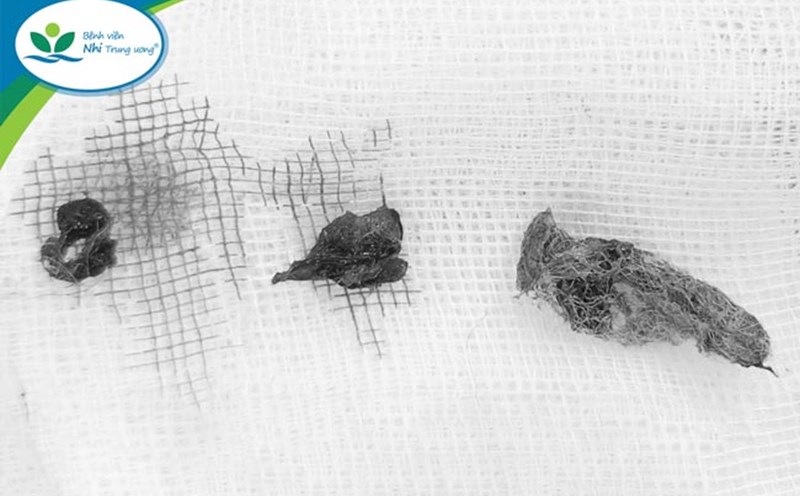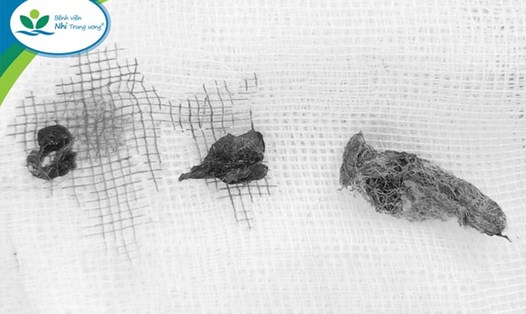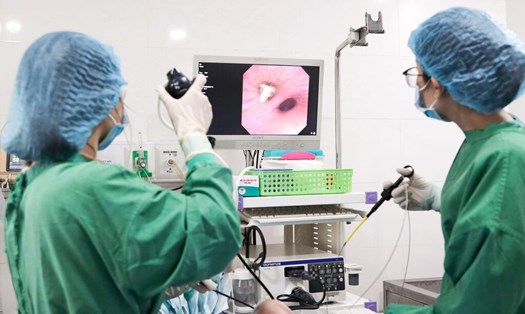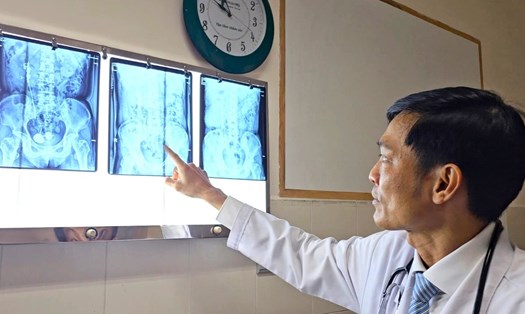After accidentally swallowing the pen tip into the airway, the child showed signs of coughing, difficulty breathing, and chest pain. The teacher immediately took the child to the school's medical room for first aid, then transferred him to the local medical center. On the way, the child stopped breathing and had to undergo continuous cardiopulmonary resuscitation on the way to the provincial hospital. Here, the child continued to receive cardiopulmonary resuscitation. However, due to brain damage due to lack of oxygen, the child had many continuous seizures, so the doctors quickly transferred the child to the National Children's Hospital.
Doctor Nguyen Tan Hung - Deputy Head of the Emergency and Anti-Poison Department (National Children's Hospital) said: "The child was admitted to the hospital in a very critical condition. The child was given a balloon through an endotracheal tube, and is being continuously given cardiac support drugs to ensure heart rate and blood pressure, is in a deep coma, and has continuous convulsions."
The child was actively treated by doctors with measures such as mechanical ventilation, circulatory volume replacement, vasomotor maintenance, anti-cerebral edema treatment, and sedation at the emergency and intensive care units. Along with that, the child underwent emergency endoscopy at the bedside to remove the foreign body in the airway.
“The foreign object removed was a black ballpoint pen tip, about 0.5 x 0.8 cm in size, covering 70% of the right main bronchus. The child’s airway mucosa on both sides was edematous, with a lot of mucus in the bronchi,” shared Master, Doctor Vu Tung Lam - Department of Respiratory Examination and Exploration - Respiratory Center (National Children’s Hospital).
Despite the doctors' efforts to treat the patient, due to the prolonged cardiac and respiratory arrest and irreversible brain damage, the patient died after 4 days of treatment.
Also at this time, the National Children's Hospital received two girls who choked on peanuts and were fortunate to receive proper and timely first aid.
Two typical cases of children choking on foreign objects in young age (1-3 years old) are a 23-month-old girl T.L in Thai Nguyen who choked on a peanut, leading to coughing and cyanosis, and a 15-month-old child P.A in Ninh Binh who choked on a peanut in the right main bronchus due to crying while eating.
Fortunately, both babies were given first aid by their mother by patting their backs, helping to dislodge some of the peanuts, and were quickly taken to the nearest hospital for first aid. The children were then transferred to the National Children's Hospital for further monitoring and treatment. At the Emergency and Poison Control Department, the children were admitted, their vital signs assessed, closely monitored, and consulted with experts from the Respiratory Center - National Children's Hospital.
After consulting and agreeing on a treatment plan, the patient was given a bronchoscopy by doctors from the Respiratory Examination and Exploration Department - Respiratory Center and anesthesiologists to completely remove the remaining foreign object in the airway. Currently, T.L.'s health has recovered well and he has been discharged from the hospital.
Foreign body aspiration is a dangerous accident in children. If not handled properly, it can cause very serious consequences, even life-threatening.
Proper first aid can help children escape danger when choking on foreign objects:
1. If the child is still rosy, can cry, speak, cough effectively, and does not affect vital functions: Encourage the child to cough, continue to monitor, evaluate, and quickly take the child to the nearest medical facility for first aid.
2. If the child turns purple, does not cry or cries weakly, and coughs ineffectively. Quickly call an ambulance and perform the following first aid procedures:
If the child is conscious:
For children:
Place the baby on his stomach, head low, along one arm, hand supporting the baby's lower jawbone.
Using the heel of your other hand, give five back blows between the baby's shoulder blades in a downward and forward motion.
If the foreign object still cannot be dislodged, turn the child over with the arms still lengthened, and use two fingers of the left hand to press firmly on the lower half of the sternum 5 times (1 time/1 second).
If the object still does not fall out, turn the child over and continue giving back blows. Alternate back blows and chest thrusts until the object is dislodged from the airway.










